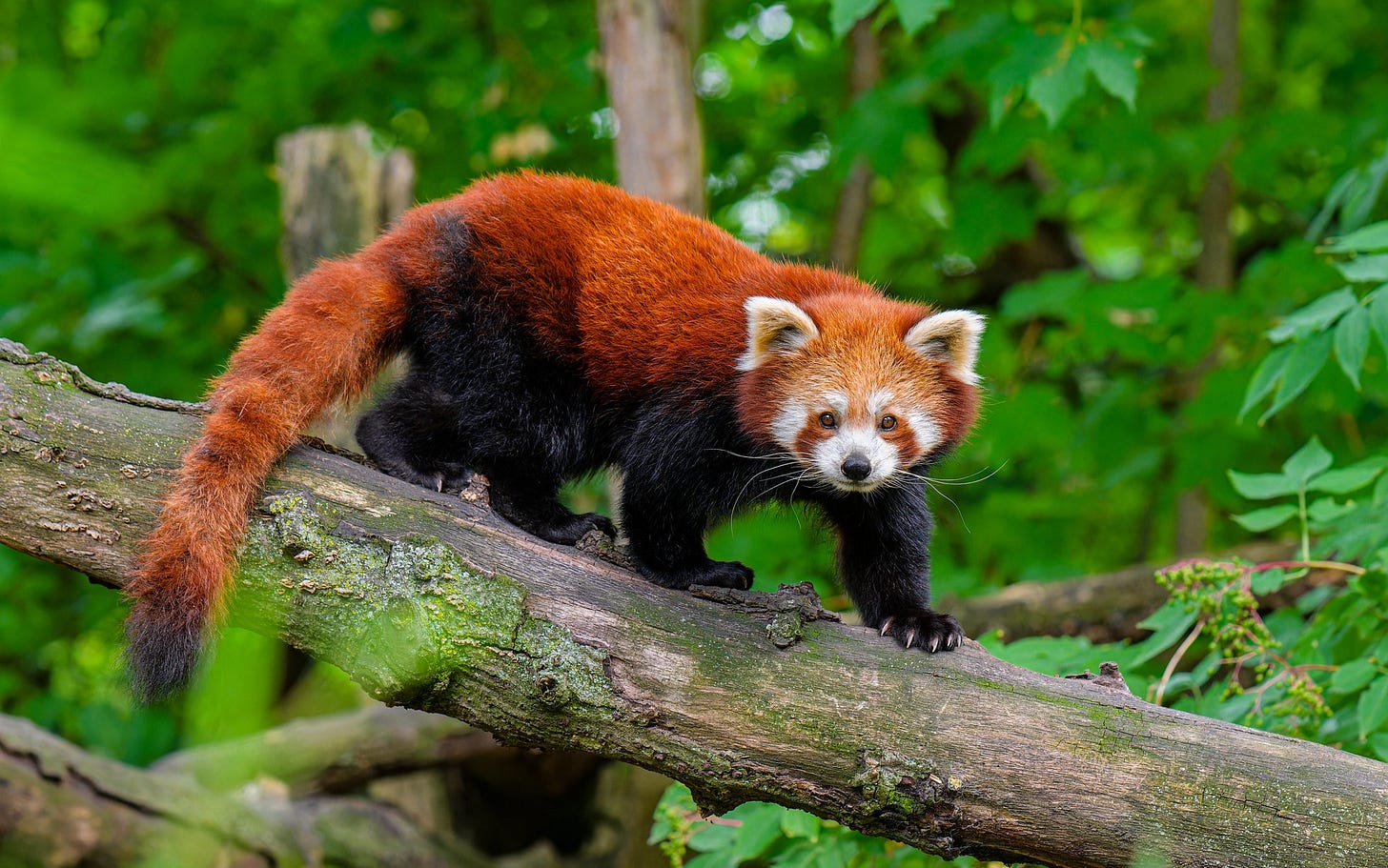Meet The Endangered: Red Panda
Red Panda (Ailurus fulgens)
The Red Panda is more closely related to skunks, weasels, and raccoons than to the majestic and much more famous Great Panda (Ailuropoda melanoleuca). But the two species nonetheless share a homeland in the high-altitude bamboo forests of southwestern China.
The Red Panda’s range extends into the Himalayan mountains of Bhutan, India, and Nepal. Much of its habitat is protected, yet deforestation and poaching for its bushy fur remain serious threats. With an estimated 10,000 individuals, its population is nonetheless relatively healthy and genetically diverse.
They are most active during the early mornings and evenings, and prefer to sleep during the day, lazily draped over lofty tree branches like sloths. Their red coloration is thought to have evolved as camouflage in an environment where red moss is common on trees. They feed primarily on bamboo leaves, but may supplement with fruits and small animals.
The Red Panda and Giant Panda are textbook examples of convergent evolution, with both sharing anatomical and sensory adaptations to their bamboo forest environment that evolved independently.
Hundreds of Red Pandas live in captivity around the world and - despite living in the shadow of their illustrious cousins - are popular attractions at zoos in Europe, North America and Japan.
IUCN: Endangered (EN)



